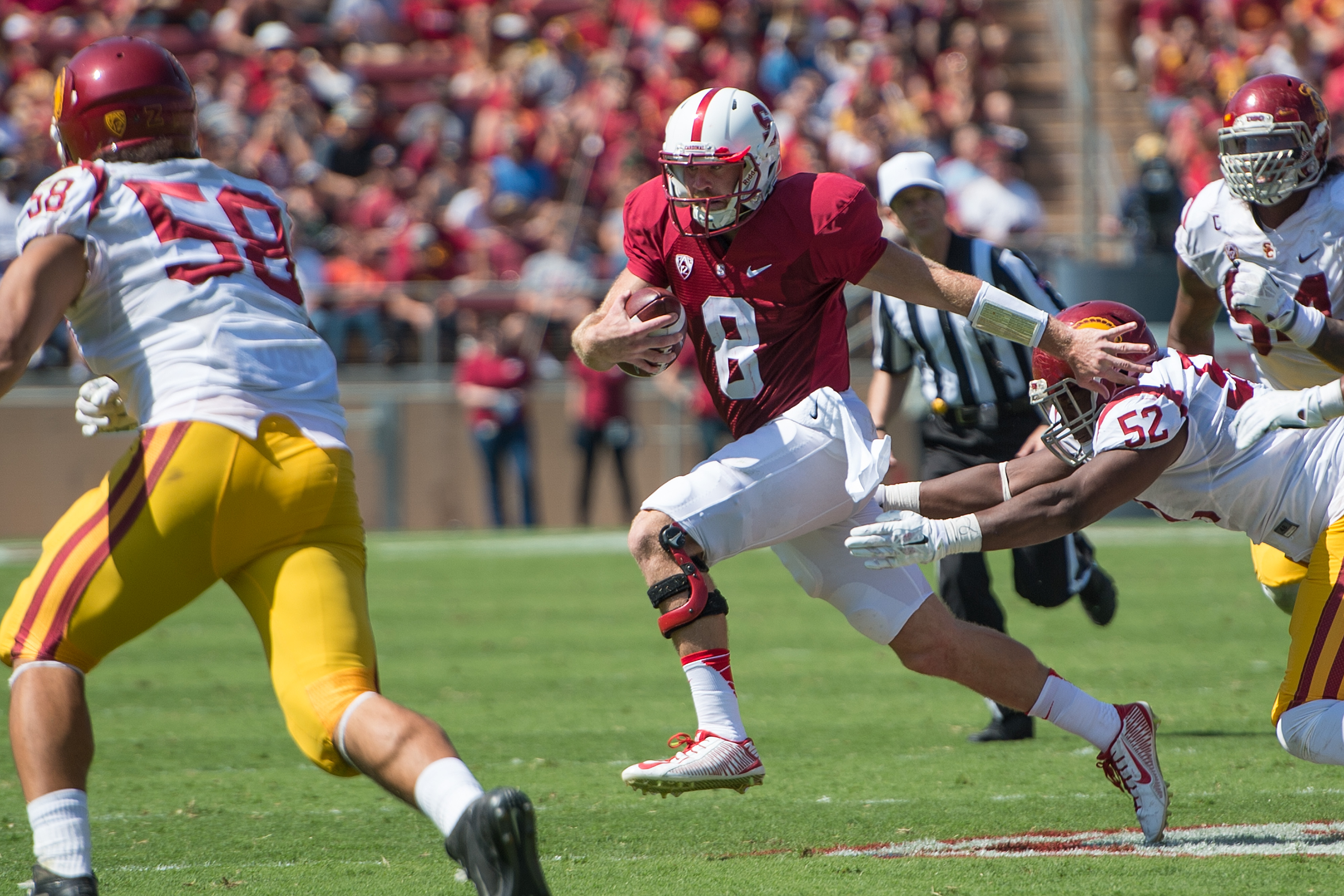Stanford football kicks off its 2015 campaign against Northwestern in less than two weeks. To conclude The Daily’s preview roundtable series, writers Michael Peterson, Vihan Lakshman and Do-Hyoung Park analyzed the Pac-12 and the Cardinal’s schedule.
Week 1: Offense roundtable
Week 2: Defense roundtable
Week 3: Special teams roundtable
Week 4: Schedule roundtable
Which matchup on Stanford’s schedule presents the overall biggest challenge?
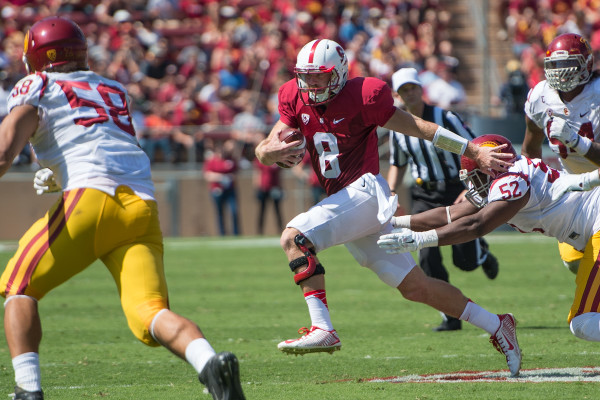
Michael Peterson (MP): It’s no secret that Stanford’s once-recent dominance of USC — the Card topped the Trojans in five of six matchups from 2007 to 2012 — has dramatically faded after two heartbreaking defeats in 2013 and 2014. The last time Stanford visited the Coliseum, it was arguably three victories away from a national championship appearance, or at the very least, a debate for the ages with Auburn as to who deserved to play Florida State. Last year, Stanford lost a game it absolutely should have won, outgaining USC by 122 yards and reaching at least the Trojans’ 32-yard line on all nine drives. Stanford’s USC demons are real. This year, Stanford has to again travel to the Coliseum and face what will be a top-10 team with a Heisman candidate quarterback and talent all across the board. That situation sounds familiar and Stanford has vanquished equally talented USC teams before, but USC must certainly be feeling the pressure to regain its elite status this year and will be hungry to start the season out doing just that. A raucous atmosphere and a fired-up Trojans team await Stanford in a game that will set the tone for the rest of the season.
Vihan Lakshman (VL): I’m also going to go with USC. The Coliseum is a scary, scary place for visiting teams, and Stanford had more than its fair share of difficulties communicating the last time it entered that deafening pit. And that doesn’t even account for the fact that USC will be bringing in arguably its most talented team in the post-sanction era. Cody Kessler, undefeated against Stanford in his career, returns for his third year under center, and the Trojans might also have the best offensive line and defense in the conference. Playing a team this talented in a rivalry game on the road has to be considered the biggest challenge on the schedule.
Do-Hyoung Park (DP): I mean, USC is undoubtedly the correct answer from what we know now. But seeing as how Michael and Vihan have already beaten that topic to death, I’m going to go against the flow and bring up another opponent that so many people are overlooking: UCLA. Even though the Cardinal have now beaten UCLA in seven straight matchups, the Bruins return almost everybody on both sides of the ball, and despite a quarterback battle that still rages on, I think that whoever wins the job will at least maintain an adequate standard of play under center and work with a powerful running game and talented defense to create, in my mind, the best team Jim Mora has had to work with in his tenure at UCLA. Even though it’s a home game for Stanford, you can bet the Cardinal are going to get the Bruins’ best shot as UCLA tries to avoid an embarrassing eighth straight loss and prove to the doubters that they were wrong to sleep on the boys from Westwood.
What may be the most likely trap game on the schedule?
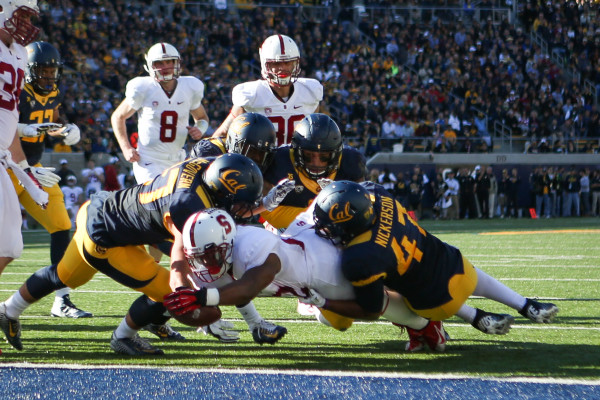
MP: It seems like so many pundits (including Do-Hyoung Park) are down on UCLA this year despite 18 returning starters from last year’s team, which was one win away from appearing in its second Pac-12 title game in three years. But there’s something to be said for truly wanting revenge. In 2012, Stanford beat UCLA twice in a row, including a nailbiter in the conference championship to rob UCLA of its first Pac-12 title since 1998. Then in 2013, Stanford handed a top-10 UCLA team its first loss of the season. Last year, a 6-5 Cardinal squad robbed another top-10 UCLA team of a spot in the Pac-12 championship in a crushing 31-10 victory. All in all, Stanford has topped UCLA seven straight times. Think UCLA remembers that? I certainly do. With so many returning players who vividly remember those defeats, UCLA will come to Stanford with vengeance on its mind. Though Stanford gets the Bruins at home and opponents like Oregon, USC and Notre Dame have more probable national title aspirations, don’t overlook UCLA.
VL: You can never underestimate the power and magic of a rivalry, and I have a feeling there will be a special electricity in the air when Cal arrives at Stanford Stadium for the 118th Big Game. The Bears possess one of the best quarterbacks in college football in Jared Goff, who leads a dangerous air-raid offense that will punish even momentary defensive lapses. With Stanford facing Oregon a week earlier and Notre Dame a week later, the Big Game comes at the heart of a tough, emotionally draining stretch of the season. If the Cardinal come out flat against a bitter rival with an obvious score to settle, an upset would be a real possibility.
DP: “Trap game” is one of my least favorite terms in the college football vocabulary because it tries to pin a tough loss on any one of a host of assumptions that likely aren’t true, so I’m just going to go with the upset on Stanford’s schedule that I could most see happening and pick Cal as well. I firmly believe that Jared Goff will be a Heisman finalist this season, and that’ll certainly help the Golden Bears’ cause, but as we all know, it’s the defense that really needs to take a step forward for Cal to compete with Stanford. It’s obviously incredibly unproven, but the pieces are there for that unit to take a step forward this year: The defense is now entering its second season under new coordinator Art Kaufman, and almost every projected starter is an upperclassman, meaning that although the talent might not necessarily be there, there’s a lot of experience to go around. If Cal’s defense can be just average, the Golden Bears could be a dangerous team that could knock off any team in the conference.
With Oregon, Notre Dame, UCLA and Arizona visiting The Farm, how big of a benefit, if any, will the schedule shift from last year be for the Cardinal?
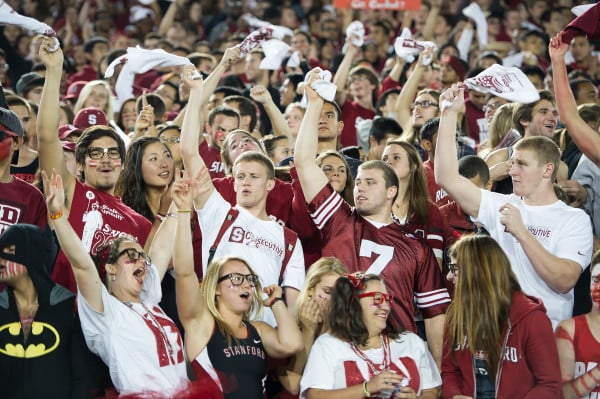
MP: It’s massive. Stanford’s schedule is completely unbalanced in terms of difficulty of home and road conference games. Last season, Stanford faced four top-20 teams on the road and just one at home. This time around, the Card will probably face three or four at home and just one on the road. Stanford is not too far removed from a 17-game home-winning streak, which ended last year against USC. Stanford Stadium may not be the loudest or most intimidating place to play for opponents, but the Card certainly feel comfortable at home. In an evenly-matched game, the location can make all the difference. I expect it to be a major part of the reason why Stanford improves on its 5-4 conference record from last season.
VL: I think this is a softball question. Which team wouldn’t want to play the toughest opponents on its schedule at home? In fact, after digging around the Stassen College Football Database and comparing the home and road win percentages of every Division I team in the BCS era, I found that no team performed better on the road than in the comforts of home (and the teams that came close, such as Texas and Duke, either won or lost almost all of their games). As Michael mentioned, Stanford was almost a lock to win at home prior to last season, so this year’s schedule has to be considered a critically large benefit.
DP: It definitely helps Stanford a lot, and not just from a football perspective. Last season, Stanford Stadium was one of the least exciting home environments in college football, and it’s no wonder why when you look at the schedule: If your home slate during the school year consists of Washington State, Oregon State and Utah, it’s going to take a lot to get anybody outside of the most devoted fans to come out to games. This year, though, that certainly won’t be a problem, as every home game will be against a meaningful or nationally relevant opponent, which will almost certainly bring the students back in droves and bring Stanford’s football fan culture back to life. The loaded home slate certainly helped bring fans out on Saturdays during 2013, and I expect things to be no different this season.
How likely is it that the Pac-12 champion finishes with two or three losses? Is this the deepest the conference has ever been?
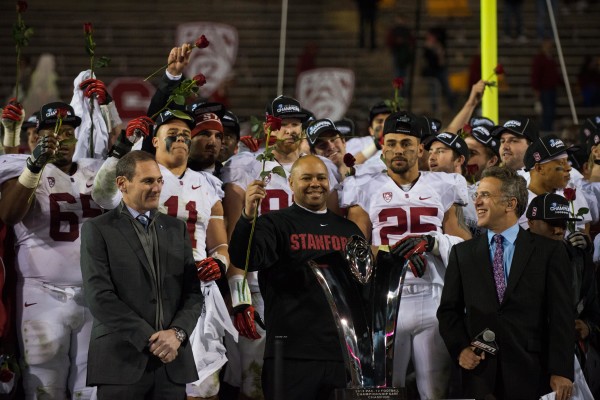
MP: With the way the conference is shaping up, I find it very likely that the champion emerges with two losses. In my opinion, there is no clear front-runner in the conference. USC was picked to win the conference by the media, but the last time that happened, the Trojans finished the season 7-6. Defending champion Oregon lost its Heisman-winning quarterback to the NFL and though transfer Vernon Adams is receiving plenty of hype, it remains to be seen if his play in the FCS can translate to the Pac-12. Stanford, the champion in 2012 and 2013, lost nine starters on defense. To top it off, Arizona State and UCLA each have enough talent to win the Pac-12 South, and Arizona State has possibly the conference’s best schedule. This is all to say nothing of defending Pac-12 South champion Arizona. Whoever emerges on top will not get there unscathed.
VL: Based on what we’ve seen in recent seasons, it’s almost a certainty that the eventual Pac-12 champion will suffer at least one loss. A nine-game conference schedule shows no mercy. The Pac-12 South is shaping up to be this year’s SEC West with four elite teams ready to ruin each other’s dreams, and the North doesn’t get much easier. I would say there’s a very good chance the eventual Pac-12 champ finishes with two losses, but I also wouldn’t be surprised if a team like USC or Arizona State separated itself as truly elite and ran away with the title. The Pac-12 is extremely deep this year, but the conference was even deeper last year with better quarterback play from top to bottom. Experienced signal-callers such as Mariota, Hundley, Mannion and Halliday kept their teams in games, and I don’t see the Pac-12 being as formidable this year with the loss of so much talent at the most important position in the game.
DP: There’s no way that the Pac-12 champion will be undefeated. No chance. Zip. Nada. Zilch. But I do agree with Vihan in that I think the conference was much deeper last year, when proven quarterbacks were at the helm of a lot of the more dangerous offenses in the league. Now that Oregon, UCLA, Oregon State, Washington State and Washington all have to replace their starting quarterbacks from last season, I have to say that there are a lot more questions about those teams’ ability to be elite than there were at this point last season. But I firmly believe that there’s a tremendous amount of parity, particularly in the South, and I wouldn’t be surprised to see any of the top five teams in the South beat any of the other four. There are no cupcakes on the conference schedule for anyone, either, and like we saw last season, even the best teams are liable to slip up on an off week. I fully expect that to be the case again this season, and whoever wins the conference should have two or three losses.
The Pac-12 versus the SEC: which is the nation’s best conference?

MP: I love the Pac-12’s depth. As I explained above, I think there are six teams with a legitimate shot at the conference title and thus a chance to make it into the College Football Playoff. Additionally, teams like Utah, Cal and Colorado are on the upswing. However, like many down in the south, I believe that the best conference will have depth but will also create champions, and the Pac-12 has yet to do that. Larry Scott said it himself at the Pac-12 Media Days: The Pac-12 needs a national champion for the nation to see it as the best conference, even if he thinks it already is. Count me as one of the people who needs to see a Pac-12 champion to rank the conference at the top. The SEC produced seven straight champions from 2006 to 2013. Once a Pac-12 team wins the championship for the first time since 2004, I’ll be very open to discussion.
VL: I can’t believe I’m saying this, but I’ve got to go with the Pac-12. As I mentioned in the previous question, strong quarterback play across the board is very important to the overall health of a conference, and the SEC just has too much uncertainty at this crucial position. Dak Prescott is the only incumbent who will strike fear in opponents and six other schools are still searching for a starter. Meanwhile, the Pac-12, despite also suffering a fair amount of QB attrition, features the likes of experienced players in Hogan, Kessler and Goff. The SEC still boasts a number of the stingiest defenses in the country and the two best individual playmakers — Leonard Fournette and Nick Chubb — but this might be the year where it slips just a little with all of the major questions at quarterback.
DP: It’s so tough to answer this question because the Pac-12 and SEC never match up head-to-head, but I’ve got to give the SEC the benefit of the doubt due to the history that Michael mentioned above. It’s one thing for a weak conference to produce a champion in any given year (cough cough Big Ten) but it’s a different ballgame when you can produce a streak the likes of what the SEC did in the 2000s. Even the strongest teams and conferences can have down years, and until the other conferences show that their elites can consistently compete with the SEC’s elites, I can’t say that they’re on the same plane. It also helps that the depth of the conference (down to Arkansas and Kentucky) is crazy and it’s also located in a recruiting hotspot with lots of raw talent that has little reason to look elsewhere in the country in order to make a big impact on a winning team. I love the Pac-12’s depth, but it’s going to take at least a couple of SEC down years before we can start earnestly having this conversation.
Contact Vihan Lakshman at vihan ‘at’ stanford.edu, Michael Peterson at mrpeters ‘at’ stanford.edu and Do-Hyoung Park at dhpark ‘at’ stanford.edu.
